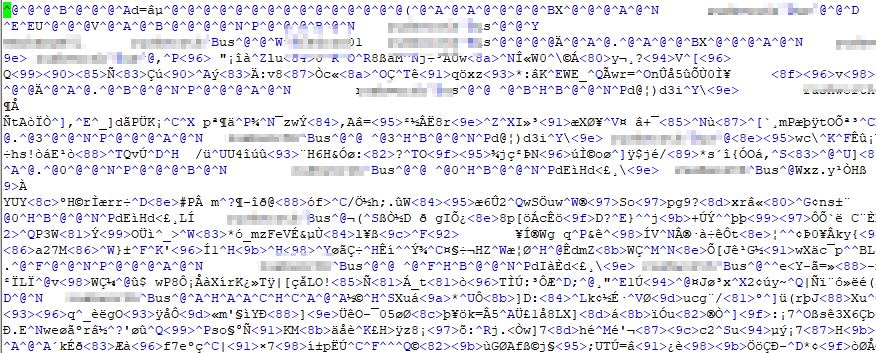I realized today what, while I had written about why response policy zones are useful, I never indicated how to configure one! So here’s a quick document outlining how to set it up in ISC Bind. In your named.conf file, add a response policy to your options section:
response-policy {
zone “rpz”;
};
Then add the correspondingly named zone at the end of the file. For purposes of testing, I added a zone as a forward only zone so I could perform a network capture to see what exactly transpires when a name in the RPZ is resolved.
zone “rpz” {
type master;
file “rpz.db”;
allow-query { none; };
allow-transfer { none; };
};
zone “windstream.com” {
type forward;
forward only;
forwarders { 8.8.8.8; };
};
Then you just have to make a rpz.db where you store your named files:
$TTL 60
$ORIGIN rpz.
@ IN SOA localhost. root.localhost. (
2 ; serial
3H ; refresh
1H ; retry
1W ; expiry
1H) ; minimum
IN NS localhost.
www.windstream.com CNAME www.yahoo.com.
Restarted named and ran “rndc flush” to avoid serving cached content instead of the RPZ host data. Then ran a few tests and confirmed that the resolution configured in the rpz zone:
[lisa@fedora02 named]# dig +short www.windstream.com @localhost
www.yahoo.com.
atsv2-fp.wg1.b.yahoo.com.
98.139.183.24
98.138.252.30
98.139.180.149
98.138.253.109
[lisa@fedora02 named]# dig +short dell905.windstream.com @localhost
ns4.windstream.com.
173.186.244.139
[lisa@fedora02 named]# dig +short www.google.com @localhost
216.58.218.228
In this process, I learnt something interesting about ICS’s implementation of RPZ: it still performs the query and then overrides the results. Odd waste of cycles, but the resolution that was subsequently turned into yahoo’s address from the rpz zone. Looking up a windstream.com host that isn’t in my RPZ and I got another query out to 8.8.8.8 which was expected. Query to something not in the forward zone and not in the rpz zone and I get no traffic to 8.8.8.8 (because it follows my normal forwarding which is to our ISP’s DNS).
I was curious if this meant rpz could not be used to publish a bad hostname locally – but attempting to resolve a bad hostname (added abadhost.windstream.com with the same CNAME to Yahoo and reloaded my zone) worked just fine.
[root@fedora02 ~]# dig abadhost.windstream.com @localhost
; <<>> DiG 9.11.1-P2-RedHat-9.11.1-2.P2.fc26 <<>> abadhost.windstream.com @localhost
;; global options: +cmd
;; Got answer:
;; ->>HEADER<<- opcode: QUERY, status: NOERROR, id: 8382
;; flags: qr rd ra; QUERY: 1, ANSWER: 6, AUTHORITY: 4, ADDITIONAL: 3
;; OPT PSEUDOSECTION:
; EDNS: version: 0, flags:; udp: 4096
; COOKIE: 1aa34751c5df7f78857a921259a8706fb5e1741a46eb5352 (good)
;; QUESTION SECTION:
;abadhost.windstream.com. IN A
;; ANSWER SECTION:
abadhost.windstream.com. 5 IN CNAME www.yahoo.com.
www.yahoo.com. 1800 IN CNAME atsv2-fp.wg1.b.yahoo.com.
atsv2-fp.wg1.b.yahoo.com. 60 IN A 98.139.180.149
atsv2-fp.wg1.b.yahoo.com. 60 IN A 98.138.253.109
atsv2-fp.wg1.b.yahoo.com. 60 IN A 98.139.183.24
atsv2-fp.wg1.b.yahoo.com. 60 IN A 98.138.252.30
;; AUTHORITY SECTION:
wg1.b.yahoo.com. 172800 IN NS yf3.a1.b.yahoo.net.
wg1.b.yahoo.com. 172800 IN NS yf4.a1.b.yahoo.net.
wg1.b.yahoo.com. 172800 IN NS yf1.yahoo.com.
wg1.b.yahoo.com. 172800 IN NS yf2.yahoo.com.
;; ADDITIONAL SECTION:
yf1.yahoo.com. 86400 IN A 68.142.254.15
yf2.yahoo.com. 86400 IN A 68.180.130.15
;; Query time: 1204 msec
;; SERVER: ::1#53(::1)
;; WHEN: Thu Aug 31 16:24:15 EDT 2017
;; MSG SIZE rcvd: 315
But there is a query that goes out to the name server and a ‘no such name’ result returned. Odd.



